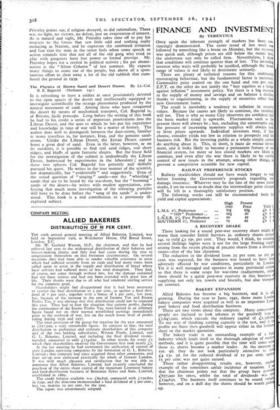The Physics of Blown Sand and Desert Dunes. By Lt.-Col.
R. E. Bagnold. (Methuen. 24s.)
IT is refreshing to have a soldier at once passionately devoted to the open spaces of the desert and intellectually equipped to investigate scientifically the strange phenomena produced by the natural movement of sand. Among those who have conquered the desert by means of mechanical transport, Col. Bagnold is, of Britons, facile princeps. Long before the writing of this book he had to his credit a series of important penetrations into the Libyan Desert, and the uses to which he has put his experience and knowledge in time of war will be a matter of history. The author does well to distinguish between the dust-storm, familiar to many travellers in, for instance, Iraq, and the genuine sand- storm. Unlike the Libyan Desert, the Syrian Desert cannot boast a great deal of sand. Even in the latter, however, or on its outskirts, it is possible to find real sand ridges, real short ridges, and bluffs of quite fantastic shapes. But the finest field for the investigation of the subject is undoubtedly the Libyan Desert, buttressed by experiments in the laboratory ; and in these two spheres Col. Bagnold has patiently and skilfully pursued his quest. He writes in the true manner of the scientist, not dogmatically, but " evidentially " and suggestively. Even of the vexed question of " singing " sands—not the " whistling " sands that are to be heard by the sea-shore, but the " booming " sands of the desert—he writes with modest appreciation, con- fessing that much more investigation of the vibrating particles Will have to be done before the " song of the sands " is under- stood. This book is a real contribution to a previously ill- explored subject.


























 Previous page
Previous page